The Article
CAD 1543 DAC & interview with Computer Audio Design’s boss, Scott Berry
30th November 2015
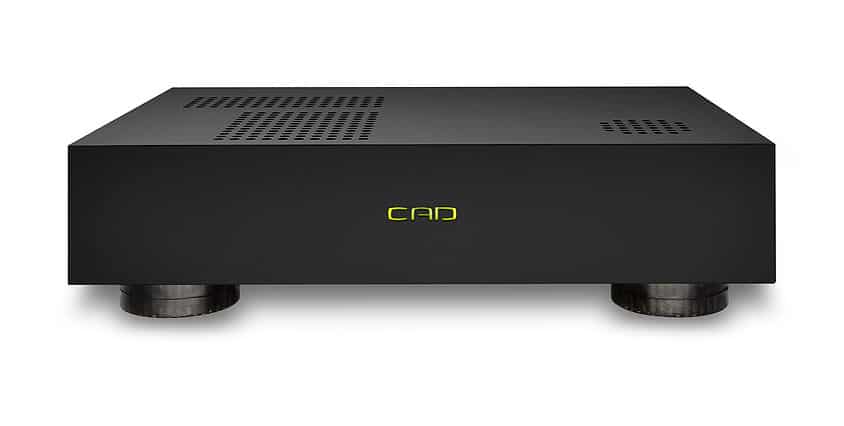
Is it time to finally dump that CD player of yours and go wholly digital? Paul Rigby reviews the CAD 1543 DAC, undertakes a thorough head-to-head challenge with a top-of-the-line CD player and presents the most in depth interview with Computer Audio Design’s boss, Scott Berry
Currently, the hi-fi market is going through an analogue renaissance. Seemingly, you can’t turn a corner without bumping into a stack of turntables and crates of vinyl. Yet, these black discs represent a tiny fraction of the global music business. Digital, in one form or another, holds the raw numbers. According to the BPI (British Phonographic Industry) UK music fans downloaded 30 million albums in 2014 while CDs – that much derided format – still produced sales figures of around 55 million albums.
So what’s that got to do with audiophiles and DACs in particular? Most downloads are of poor quality and listened to on equally inferior (in sonic terms) smartphones or tablets while CD is limited to 16bit/44.1kHz. So jolly well what?
Well, there’s a few reasons that this information has relevance. Firstly, if digital is where the money is, then digital is where the big investment is. Look at the technology news pages, there are large and regular improvements appearing in the digital and especially DAC fields almost on a monthly basis. Secondly, because downloads are so prevalent, the ‘software’ market is expanding and maturing too. This is why the notion of the High Definition download is also becoming popular with suppliers of suitable HD music starting to grow in numbers. Even streaming operations, Tidal being one, have (finally) reached the CD quality level of output. Thirdly, a lot of those 55 million CD albums are being ripped which is releasing this music from it’s physical prison, it’s restricted disc-based home, which is partly responsible for the criticism CD has always had. Ripping opens up the CD format, once ghettoised as a poor quality music source, for potentially better things in sonic terms as the notion of the evolving DAC provides hope for a boost in CD-derived music performance.
Over the years, I’ve seen, heard and reviewed many digital platforms. Whether they be CD players, transports, DACs, streamers and more esoteric forms. As a big fan of vinyl and its apparently unlimited potential (we have yet to fully explore what an analogue turntable can really do) I have found continual dissatisfaction with ‘digital’ as a music carrier. Analogue might not be perfect and might require a whole host of tweaks and ‘fettling’ to get right but you can always hear potential in vinyl, even in budget systems. Digital has, even in its higher resolution forms, seemed frustrating and uninspiring.
A ray of light entered my binary gloom when I first entered the Computer Audio Design room at a national hi-fi show some time ago. A year? More? Scott Berry had just launched his 1543 DAC. Listening to him and his good lady wife, Isabel, talking about what they wanted to do with digital and where they wanted to take it, made me narrow my eyes and crease my fore-head. What Berry was saying, his theories and philosophies, struck me as…different.
Then – as most journalists are – I was diverted by life and moved onto other things. Good reviews of Berry’s new DAC appeared throughout the media. It was nice to see but none of them really got under the skin of what Berry was doing. None of them really provided a platform for Berry to expound on his philosophies.
Personally, if you’re going to commit around £7,000 on a highly developed piece of kit then I, for one, want to actually believe in what the designer is hoping to achieve. I don’t want a blind ‘this is good/bad’ review. I still have too many crossed fingers. I end up asking too many questions. I want more information.
Hence the reason for this review, which goes further – I’d like to think – than others out there and why I had a long chat with Scott Berry so I could see exactly where he was coming from. So I could understand what he wanted from this box. But also, so I can independently judge whether his vision has resulted in a successful product. Does his DAC live up to the dream?
ENTER…BERRY
Before we ask ‘How did the 1543 DAC get here?’, let’s ask the same question of Berry. In audiophile terms, what sort of man is he?
“I became an electronics engineer in 1989,” said Berry. “One of the reasons was my love of audio. I remember, after receiving my first pay cheque, buying a Nakamichi 480 cassette deck. I wanted to get into the audio business but ended up in Xerox instead. As a hobby, though, I was always building things for myself: pre-amps, phono amps and so on. About 15 years ago, I was looking at DACs and that has become my ultimate obsession.”
Which brings up question number one. Berry didn’t say ‘CD players’, he said “DACs”. Why DACs? Because he really doesn’t like CD players. Simple as that, “I didn’t like the CD players that I could afford and most of those that I couldn’t,” he said. “There was something about the sound quality. I was there when they first appeared in the early 80s. I got one, brought it home, one of the original Philips, I think (which is why I’m still playing around with their resistor ladder chips).”
At this point, Berry had an original Rega Planar 2, the original Naim Nait and a pair of Linn Kan speakers. He wandered away from CD as a dedicated listener, although he kept in touch, monitoring developments but he was never impressed.
“My hobby then involved DACs and trying different chips and designs. I was still working for Xerox, at this time. My results were taken to a few friends who owned their own hi-fi shops. They compared it with things they were selling and thought my results were pretty good. This would be around five or six years ago. At that time, I was toting a very early prototype of the 1543 DAC.”
It was the UK retailer, Infidelity, who paid Berry most attention, offering both enthusiasm but also practical help in terms of marketing and sales (“I’m an engineer so I was clueless!”) Once Berry began serious development on his DAC, he made the brave move of quitting his day job at Xerox. So why build a DAC at all? Why not build a better CD player?
“Because of the mechanism and the hardware of the CD player. There’s often a lot of money put into the mechanism itself, just to keep vibration down. It didn’t make a lot of sense to me. I’m a computer nut. I’m heavily into overclocking them, I’ve built many. It made more sense to have the digital music data on some sort of hard disk. That made more sense than taking data off a CD in real time. I know that hardware vibration can really affect sound quality. Trying to get a CD mechanism to not put vibration into the whole chassis is a difficult and expansive task. It can be done but you end up putting too much money into a mechanical moving apparatus.”
Of course, there was also that secondary appeal of doing something a bit different. Everyone was producing CD players, at the time. Berry, it appears, likes to be ‘out of the box’. Maybe it’s a wish not to follow the crowd? OK, so supplying a DAC with a hard disk is all well and good but, surely, a mechanical hard disk is full of noise and clanking mechanical odds and ends?
“Of course. Hard drives, back then ran at 5500rpm, now they’re up to 7200rpm but the HD was always in a separate chassis to the DAC to minimise that vibration. The basic CD player (although there are separate boxed transport/DAC CD players out there) has the mechanism in the same box as the DAC itself.”
Continuing to play devil’s advocate on the initial design decision for the CAD DAC, I wondered, in that case, why Berry didn’t take a decision to build a better quality CD transport? After all, there’s already been a lot of research on the subject, “I was drawn more to computers and hard drives to make the whole thing work,” said Berry. “Using testing equipment, I can see that the noise and jitter coming out of a SSD, for example, is definitely less than the CD players that I have sitting around here. The hard disk and especially the SSD is a better source in terms of delivering music. The latter has no moving parts. The noise floor and ‘blackness’ drops quite a bit.”
OK, so Berry obviously sees more potential in terms of a transport for digital music in the hard disk. Most people, if they use the 1543 DAC, will hook up a laptop to it. The hard disk is then stuck inside a noisy laptop which then, surely, negates the hard disk’s advantage as an isolated music carrier doesn’t it? “I’ve put a lot of work into that question,” said Berry. “I’ve put the exact same software onto a couple of computers and they all sound different. I had to learn why. I’ve put all that knowledge into the CAT (a seperate transport system that I’ll review soon). It is truly a can of worms. It’s not a simple matter at all. I don’t think that it’s truly been done properly before. One of the issues is that everything is so crammed together, inside a laptop. One of the biggest problems in digital audio is that nobody seems to talk about this issue. RFI in particular. Jitter is important but you don’t see anyone taking about RFI in computers and digital equipment: DACs included.”
So it seems that there are trade-offs when using a laptop to deliver music to the CAD DAC. We’ll address those trade-offs in more detail during the actual review and also attempt to get around the issues that the laptop creates.
ITS NOT ABOUT THE CHIP
Focusing more on the DAC itself then, why use the 1543 as a chip? “One of the first DACs that I ever made featured a 1541 chip, a slightly different chip, plugged it up to some batteries and away I went, 15 years ago. Since then, I have tried different DAC technologies but kept returning to the 1543. That is, the TDA 1543 chips currently used inside the box. The sound quality that I get from using multiple 1543 DACs…there’s a richness, naturalness and harmonic performance that I have never found elsewhere.”
We’ll get to the ‘multiple’ bit later but notice that I asked about the DAC chip. When faced with any hi-fi DAC product, that’s the first question that pops into my head. It’s the same with just about any journalist and customer out there. That, according to Berry, is just plain wrong thinking, mainly because, “…the chip only offers around 30% of the sound quality. The power supplies offer more than that on their own. The power supplies in digital audio are everything plus the interface to the DAC chips. Then there’s the output stage. The DAC chip is just the icing on the cake.”
Now you are beginning to see where Berry’s philosophy is different from most people in the mainstream of the industry. This is where the design for his DAC moves away from the general design template.
“I’ve given an immense amount of time to the DAC power supplies,” he said. “There’s five independent power transformers in there. The reason is my obsession with noise and intermodulation. I’ve got a separate transformer and a completely separate circuit that does nothing else but drive the oscillators. Nothing else but that. Other DAC designs out there are using off-the-shelf voltage regulators and things. They can offer low noise levels but bandwidth and slew rate – how quickly can they deliver current – are quite poor. Mine are exceptional in terms of bandwidth and speed. That outweighs trying to get the last nano-volt of noise taken away. My power supplies are discrete and are my own designs, completely. There’s no Op-Amps in there.”
So why is the speed of the signal important? When Berry worked for Xerox, he was the digital design guy, working on circuit design and PCB board layout for high speed digital designs. So his pedigree in this area is very good indeed. One of the aspects of the DAC that Berry was cautious about was the standard USB2 carrier frequency. At around 200MHz, this mighty signal has to go into the DAC and be converted over to I2S to then be of further use. Managing the power supply to keep that signal level high and clean is a tricky task. In fact, Berry spent a lot of time at Xerox on that one issue and even more time doing it for audio.
“I can hear the differences in my different power supply designs over the years. Every time I decrease output impedance and increase speed, then sound quality improves. You’ve also got oscillators that are rechecking the signal coming into the DAC and they’re running at 24MHz. Having a quiet supply is one thing but having one that can keep up and be clean is another. It’s quite complex.”
Berry has to make sure that the signal is not distorted in the meantime too.
One of the things that digital fans like to affirm, whether talking about digital or USB cables in particular is that, “Oh, its all 0s an 1s and there’s never errors.” Well, that’s not true at all. Bits can be missed and are missed all of the time. You hardly ever get a perfect transfer of data. Once that data enters the DAC, you have to make sure that the signal that is recreated by the USB-I2S interface, is fast enough.
“It relates to the power supply being able to react quick enough to changes in the signal,” said Berry. “The modular nature of the system helps that efficiency.”
Another reason for the separation of power supplies into separate entities is noise. If you have one power supply with five to seven voltage regulators hanging of it which each of those regulators then connected to a separate circuit then any resident noise will be spread to each and every circuit.
“Even if you have the best voltage regulators in the world, you’ll get intermodulation noise,” said Berry. “That noise moves from one circuit to another circuit to another circuit and so on. That is, one circuit’s noise will interfere with another part of the circuitry. It’s easier to block that under 20KHz or even 50KHz but when your dealing with frequencies in the MHz range, trying to stop that frequency from truffling through everything in the box is a wholly different game. Most of the things inside the DAC start in the low MHz range and go up from there. Hence, the independent power supplies.
Speaking of noise, some may be surprised to learn that one of the great products to help isolation are transformers themselves, “So there’s a transformer there to power oscillators. Another only handles another part of the circuit. It’s a bit like having one road full of 50 cars and then having 10 roads holding five cars each. With all of those cars on one road, the likelihood of them smashing into each other is much greater.”
MOVING ON
That’s the DAC and the power supplies. The case itself is made from acrylic, 10mm laser cut. It costs a lot more to make the case from acrylic than typical materials but Berry was concerned about mechanical vibration, “Early on, I tried different types of materials: steel, aluminium, wood and acrylic and more. It was amazing in hearing the sound differences from each type of material. Wood was excellent, acrylic was better. The rest was a huge step down. I played with different types of acrylic and ended up with my case. Wood has issues with international safety laws. The resonant frequency of acrylic is, well, knock your fingers on it and see. It’s also non-magnetic. It also doesn’t trap the RF on the inside. It lets it escape.”
Berry uses a grand total of 16 DAC chips in his box. There’s two main reasons. The DACs are current output devices and, like all products of this ilk, have and inherent noise signature. If you pair two DAC chips in parallel, the amount of current you get is doubled. If you stack multiple chips over 16 times, your signal-to-noise ratio is not 16 times, it’s quite a bit less, “You end up with a better signal to noise ratio that’s vastly better than if I had a single DAC chip in there, on its own.”
One of the more interesting and, certainly, surprising aspects of the DAC design is the output stage. It’s certainly…minimal, shall we say, “Well, some people use tubes, others use low noise JFET and so on. My output stage is passive. There are no powered components. No Op Amps and no transistors. There are just two parts. A resistor that the current from the DAC goes through. It’s an audio quality resistor, made for me to my own specifications by a company in the USA that gives us the voltage that appears across the RCA outputs. There was some DC component that had to be removed. I used a capacitor to do that job. Again, something made for me to my own specification.”
The latter was made, in fact, by Duelund Coherent Audio in Denmark who mainly make capacitors for speakers, “I was the first guy to use their capacitor as a DC blocking capacitor in the DAC. There’s now four or five companies who are doing the same thing. I must have tried 50 capacitors, over the years, before I settled on this one. Hence, my output stage is a resistor and a capacitor. It produces a natural sound quality. The only thing that came close was a transformer output. For the 1543, you’re listening to the current that’s coming directly out of the DAC chips coming across one of the top resistors made on the planet.”
Inside the DAC, in the back right corner is a power filtering design that is optimised to the frequencies that are important to the 1543 DAC, “It’s very specific. If you power the 1543 DAC to another conditioning device then it doesn’t work well. I’m a big believer in proper mains conditioning but there’s a lot of people out there who are not doing it properly,” said Berry.
The mains cable, finally, is a bit on the beefy side, “I’m a fan of fine conductors. The plug is from Atlas but not the cable. That is a high gauge OCC copper example with fine strands and good insulation. I’ve tried over 30 but that one was the best for me.”
DRIVERS AND PLUGS
The 1543 DAC is a chunk of hardware with no real software included. It’s basically a dumb box so you need software connected to the 1543 DAC’s USB to make it work.
The required driver – covering all operating systems – can be downloaded from the CAD website. The DAC won’t work without it. It allows one to talk to the other.
My intention was to test the CAD 1543 DAC with a MacBook Pro and so I asked Berry about a recommended music player, “I like Audirvana. Decibel is good too. As long as you don’t use iTunes. The newest iTunes is actually a good quality ripper but, in terms of playing back, it’s lacking. It’s also a resource hog. In terms of software formats, I would recommend WAV, AIFF and Uncompressed FLAC (which has better metadata than WAV). I can’t hear the difference between the three.”
As for the chassis itself? Apart from a USB slot on the back, joined by two RCAs to hook the DAC to your hi-fi, there is nothing else to it. Zilch. No other outputs, inputs, switches or toggles. You don’t get a chance to replace the power cable, there’s no on/off switch and the power light is part of the logo on the front.
SOUND TESTS
This sound test is not just a test of the CAD 1543. I wanted the test to be bigger than that. I wanted it to be a showdown between digital play and CD play. Hence, I drafted in a Densen B-475. This is that company’s top-of-the-range CD player and costs broadly the same (give or take the odd hundred). As it stands, this is an excellent CD player. For a CD manufacturer, Densen is quite enlightened. It has taken note of inherent vibration and noise in the design and has even gone to the trouble of dividing the player into two boxes, not into a transport and DAC but into a transport/DAC and seperate power supply. The B-475 is the best CD player that I have heard in many a long year, in terms of the balance between the performance and the price paid. As you can see, I didn’t want the CAD 1543 DAC to have an easy ride. In fact, the CAD 1543 DAC had a real battle on its hands.
Before I played any music I downloaded and signed up for Audirvana Plus for use with the CAD DAC, a top quality digital file player and, in the preferences section, optimised the software with guidance from Scott Berry. That optimisation is a bit of a story in itself so I will be returning to this subject in a future feature. For now, I want to retain the focus on the CAD 1543.
In addition I downloaded, from the CAD website, and ran CAD’s own special optimiser software which turns off a lot of your laptop’s processes, turning it, largely, into a dumb music player platform. Running the optimiser reduces unnecessary noise which will only interfere with the music output. The first time you run this utility, which you do via the Terminal (a command line utility), it can give you a bit of a fright because it looks like your entire Mac has been killed off, on a software level. Never fear though, the same utility switches everything back on. I’ve done this on several occasions without any long-term problems to my MacBook.
I then plugged my MacBook Pro, powered by a SSD drive, directly into the DAC using, a basic USB cable (a nasty black stringy thing that was included as a freebie with an external hard disk I bought a while back) and began sound testing with a WAV file. In this case, the dynamic Hedonism by Skunk Anansie.
Comparing the CAD to the Densen was fascinating. Playing a CD quality WAV of Skunk Anasie’s Hedonism on the CAD and comparing it to the original CD played on the Densen, the CAD lacked something…noise. The blackness around the CAD was such that the volume was quite a bit lower than the Densen which prompted a higher gain setting on on my Pre. Of course, moving parts, transport noise, jitter and other associated transport issues were gone from the CAD.
That done, the CAD sourced track revealed a tremendous clarity. I could almost call the presentation a dissection. Don’t infer, from that statement, that I think that the CAD is in any way clinical, there was no brightness in the CAD playback at all. Instead, the noise was so low as to highlight subtle gaps in between instruments, strings and other aspects of the mix. One of the highlights was the gap I could now hear in between’s Skin’s double tracked vocal effort. You could plainly hear the micro-second delay of the double tracking, hanging off her original vocal.
The insight was impressive. Bass was crisp, punchy and lean while the upper mids and treble offered further transparency that allowed you to simply hear more of what was going on. There was no colour in the CAD’s output, no dryness, no flinty or metallic sheen to this digital output. There was a real analogue flavour to the CAD. Analogue, that is of the more expensive kind. This DAC sounded more like a 10k+ turntable.
I moved from the dynamic to the delicate and some vocal jazz via Carol Kidd, from her Dreamsville album, and A Nightingale Sang in Berkeley Square. Again, the intention was to compare this 44.1kHz WAV with the CD original.
Again, I was struck by the lack of noise from the CAD. On this track, though, a female vocalist plus a jazz trio, there was more space to free up in the first place. When the CAD set to work, therefore, the difference was even more dramatic. Firstly, Kidd’s voice was far more expressive in its delivery than the CD. Hence, I could clearly hear her breathing as part of the machinery in her singing. The use of pure ‘breath’ in her presentation provided the vocal with more emotion. The acoustic guitar solo was also impressive but for another reason. The timing on this section was perfection itself. It was tight, precise and speedy. Strings were plucked with exactitude and reverb decay lingered but never merged with other elements later, which can happen on sloppy hi-fi systems. More than that, the piano lost its CD-infused bloom effects, giving it a nippy, jolly air. In that same frame, the bass was now giving bouncy lower frequencies. There was far more oscillation from this instrument.
And so it went on, from CD to CD, the CAD proved superior to my top quality Densen. In every respect, the CAD trumped this superb piece of engineering. So what was next? How about the USB cable? Up to this point, I had been using a basic cable, the black type given away from with most hard disks. I drafted in an expensive ‘ Blue’ USB cable from Tellurium Q and the change was immediate. Playing the Carol Kidd track, the entire track, over all frequencies sounded, how can I put this…grown up? No? Richer then, more mature and full bodied. The basic cable actually produced horrible ‘glare’ in the upper mids that sometimes made them rather shouty. During the original testing, I put this effect down to the gain being too high. I thought it was basically just a bit loud. Not so, the audiophile USB cable calmed this effect and gave the vocal added time and space, producing a considered performance from Kidd while even more subtle aspects such as percussive rim shots now offered their own reverb pockets. Of course, the replacement USB also widened the sound quality gap between the CAD and my reference CD player.
One of the oddest tests I did was to transfer the Kidd track to an external drive. A Porsche-designed Ministation with a Buffalo drive inside, connected to the MacBook via a Lightning connector. Sourcing the track in this manner, amazingly, improved the sound quality even further. The track offered enhanced focus, lowering noise still, removing slight bloom edges off the vocal and allowing subtle parts of the songs to move forward in the mix such as the rhythmic rim shot during the later part of the track. This effect had previously been rather swamped by other instruments up until this point but, with the external drive as a source, it proved more dominant. Why the improvement? After all, the external drive, despite it good design pedigree, is a mechanical device, the internally fitted Macbook drive is a supposedely soniocally superior SSD drive. What’s going on? (See Extra Points, below)
Moving to higher resolution files I played the 24bit/96kHz blues of Harry ‘Big Daddy’ Hypolite, an ageing blues shouter with an acoustic guitar. This one was interesting because, with other digital players, Hypolite’s voice tends to blitz and mask everything around it. Like shining a bright torch on an item, it’s difficult to discern the detail of anything lying in an around it. With the CAD, though, the voice benefited from extra focus and presise timing which gave it discipline and improved the timing of the vocal while his guitar playing was given air and space providing a pleasant presentation and one that added new subtleties to the track.
Also, despite reaching to 176kHz (the CAD DAC doesn’t official support 192MHz but does play them…mostly), the 192kHz rendition of Ubi Caritas, a sort of contemporary jazz/classical piano improvisation piece by Ola Gjeilo, this CAD tracked the tonal complexity of the piano very well. The dynamic nature of the instrument was also contained beautifully.
CONCLUSION
Frankly, I was shocked. Shocked at just how good the CAD 1543 DAC is. Scott Berry has slaved over the creation of this box and my goodness, it shows. The attention to detail is quite staggering. The quality and thought behind the design is breath-taking and the implementation basically deserves a round of applause. You may have seen other reviews which have praised this machine but I wonder if that praise has gone far enough. In my opinion, this one box is a game changer. The target of my praise, though, is the noise reduction. Noise (in its many forms and varieties) is the real enemy of sound quality. It’s often the case that hi-fi components provide top notch sound quality but most people never hear it from their system because noise gets in the way. With the CAD 1543, Berry has designed a DAC with such finesse as to erase the bulk of any possible inherent noise, allowing the true quality of his hardware to shine forth.
So, if you are wondering whether now is the time to get into digital then the CAD 1543 might just be the trigger that you need. I hope to be reviewing his CAT front-end and USB cable at a later date. Berry promises that the sound quality increases even further with these additions.
On a practical level, the DAC is built as a modular format so can be easily upgraded by the company. It thus has a sense of future proofing about it.
On a sonic level, the CAD out-performed my reference CD player by some margin: and that was whilst the CAD ran off a poor quality USB cable and internally mounted laptop hard disk!
I’ve never found a CD player that truly excited me, they have always been a disappointment. The CAD DAC is the first digital source I have ever heard which has triggered serious thoughts of reaching for my wallet. In terms of digital sound it is a true game changer and, thus, I have no other option than to give it the best award on the shelf a [gulp] Golden Groovy. Only the second gold award that I have ever awarded. Yes, it’s that good.
Despite the derision from those audiophiles who dislike the CD format there are still many who love it, there have been a range of traditional CD player designs from enthusiastic manufacturers that have attempted to revitalise and support the ageing disc format while music studio ADC-based improvements have enhanced the core CD sound over the past few years.
Nevertheless, the question now has to be asked. After my accumulated years of listening and testing CD players and DACs, after this thorough review of the CAD 1543 DAC and faced with a critical comparision with one of the best performing CD players on the market, is the CD player now, finally, dead? Faced with the imperious performance from the CAD 1543 DAC, which is only at the first stage of its development, I have to say “Yes.”
CAD 1543 DAC
Price: £6,900
Tel: 0203 397 0334
Website: www.computeraudiodesign.com
Good: game changing sound quality, meticulous design, precise implementation
Bad: nothing
RATING: 10
REFERENCE SYSTEM
Avid Acutus turntable
SME IV arm
Benz Glider cartridge
Icon PS3 phono amp
Aesthetix Calypso Preamp
Icon Audio MB845 Mk.II monoblocks
Densen B-475 CD player
Tellurium Q USB, interconnect and speaker cables
Quad Electrostatic ESL-57 speakers
EXTRA POINTS
After the interview and the review was over, I thought of a few extra issues that Berry was kind enough to address.
Q: Why does the CAD 1543 DAC feature only a USB port and no other connections such as balanced outputs?
A: “The name of the company is ‘Computer Audio Design’ because we believe that the future of music is going to be computer based. The sales of CDs are dropping and streaming and digital downloads are on the rise. We also believe the sound quality that is possible through a properly designed computer playback system has the potential to be the best sound that we have ever had.
“When I started designing DACs there was no such thing as an ‘audio USB interface’, so I have had a lot of experience with S/PDIF. I started using some of the very first USB interfaces that came on the market. Even at that early stage, I formed the opinion that a USB interface offers a much greater level of sound quality over S/PDIF. The other critical issue is that USB is the focus of current development whereas I know of no company investing in S/PDIF transceiver technology, S/PDIF is on its way out.
“However, to do a USB interface properly is a complex task. Having a single USB input allowed me to concentrate on making the USB interface the best it could possibly be. I use three independent power supplies with independent transformers just for the USB interface. I put all my energy into making the best USB interface possible.
“I did not offer balanced output because I did not believe that with the 1543 DAC design there was any improvement in sound quality by going that route. The TDA1543 DACs can be made to have a balanced output, but the additional hardware needed to do that I felt actually reduced sound quality.
“I do offer a balanced output option for those that really want it or need it like in professional applications. The balanced output option in the 1543 DAC is achieved by using top quality Lundhal transformers.”
Q: Why doesn’t the CAD 1543 DAC support 192kHz?
A: “Around 90% of the 1543 DACs will play 192kHz absolutely fine. In fact, I think that I am the only person that has got a TDA1543 DAC to play at 192KHz. Due to the chips being right on their limit, I cannot guarantee 192KHz: 176.4KHz is what I guarantee. If the signal locks than you are hearing 192KHz. If it does not lock you will hear static. Please try, but start with the volume set low. The 1543 DAC has no software. It can not and does not oversample or undersample. The 1543 DAC also has no output filtering. Some people call this design NOS or Non Oversampling DAC.”
Q: What’s the best CD ripper for the Mac?
A: “One of the reasons I got into Computer Audio is my belief that a ripped CD played through a reasonable system will provide a superior sound quality compared to a considerably higher priced CD playback system.
“The best ripper in my opinion is dBpoweramp.” (This software has been newly released on the Mac and has been out for many years on the PC – I will be revisiting ripping software in a future issue. So bear with me on this one)
Q: Why does an external mechanical hard drive sound better than an internal SSD?
A: “Never ever store your music on the same drive as your operating system (OS). Your OS drive is constantly getting accessed. If you put your music on the same drive as your OS then sound quality suffers.”

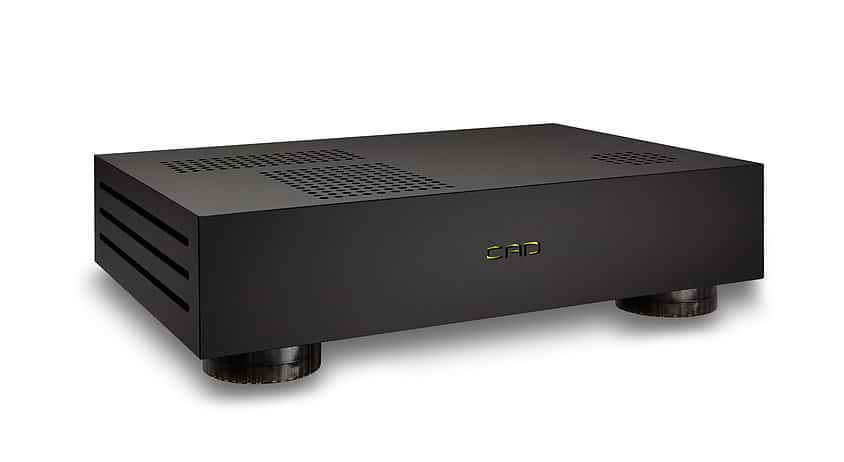
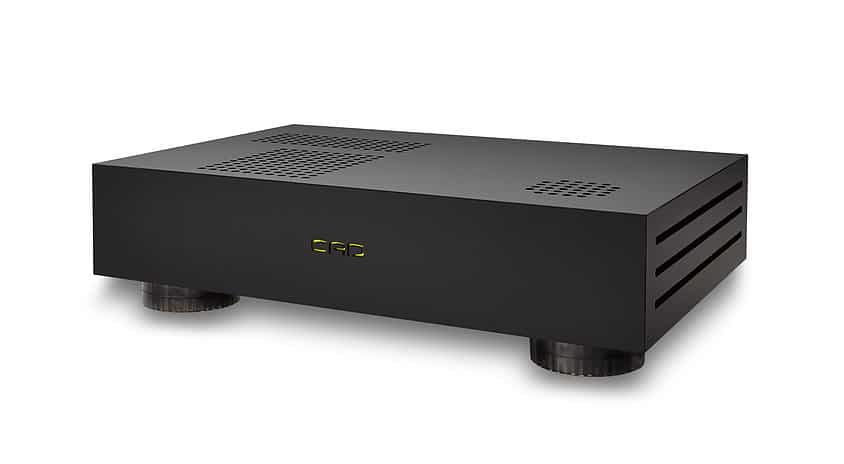
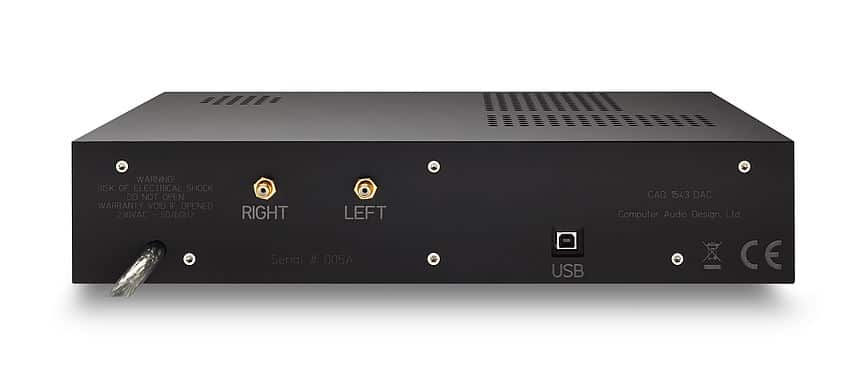
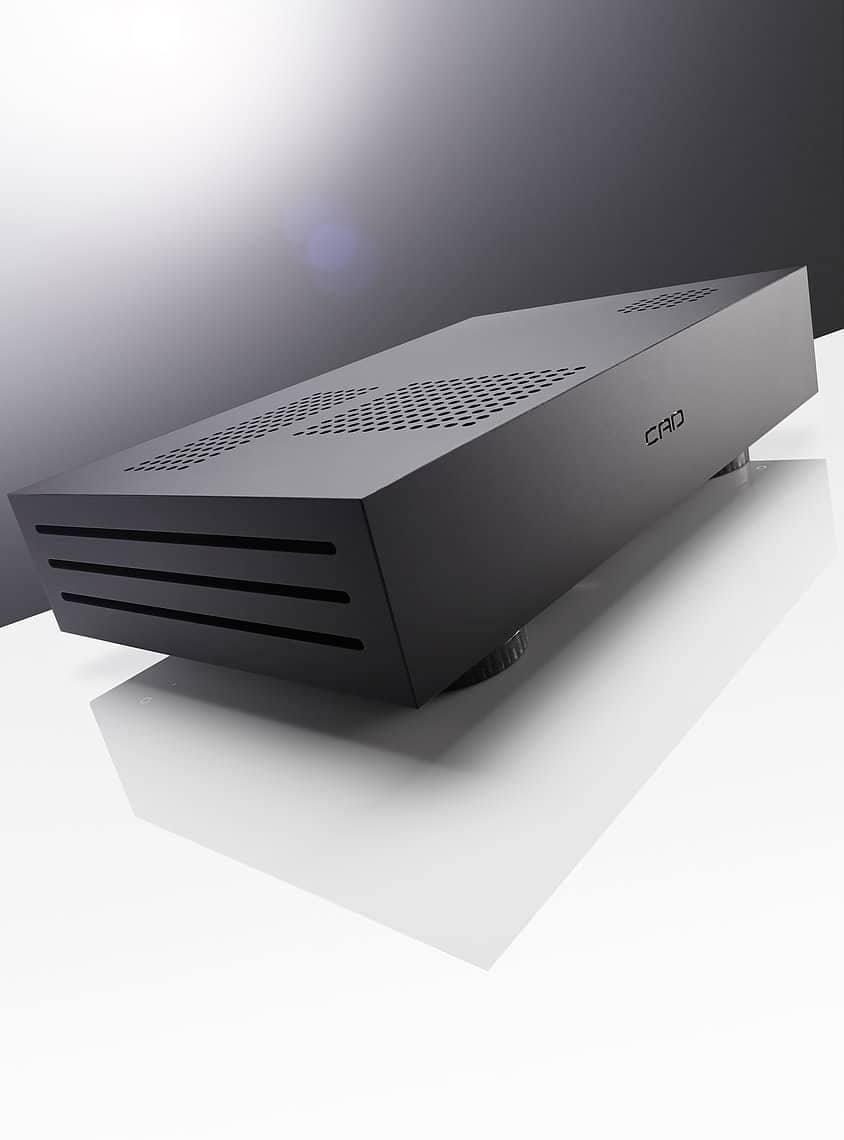
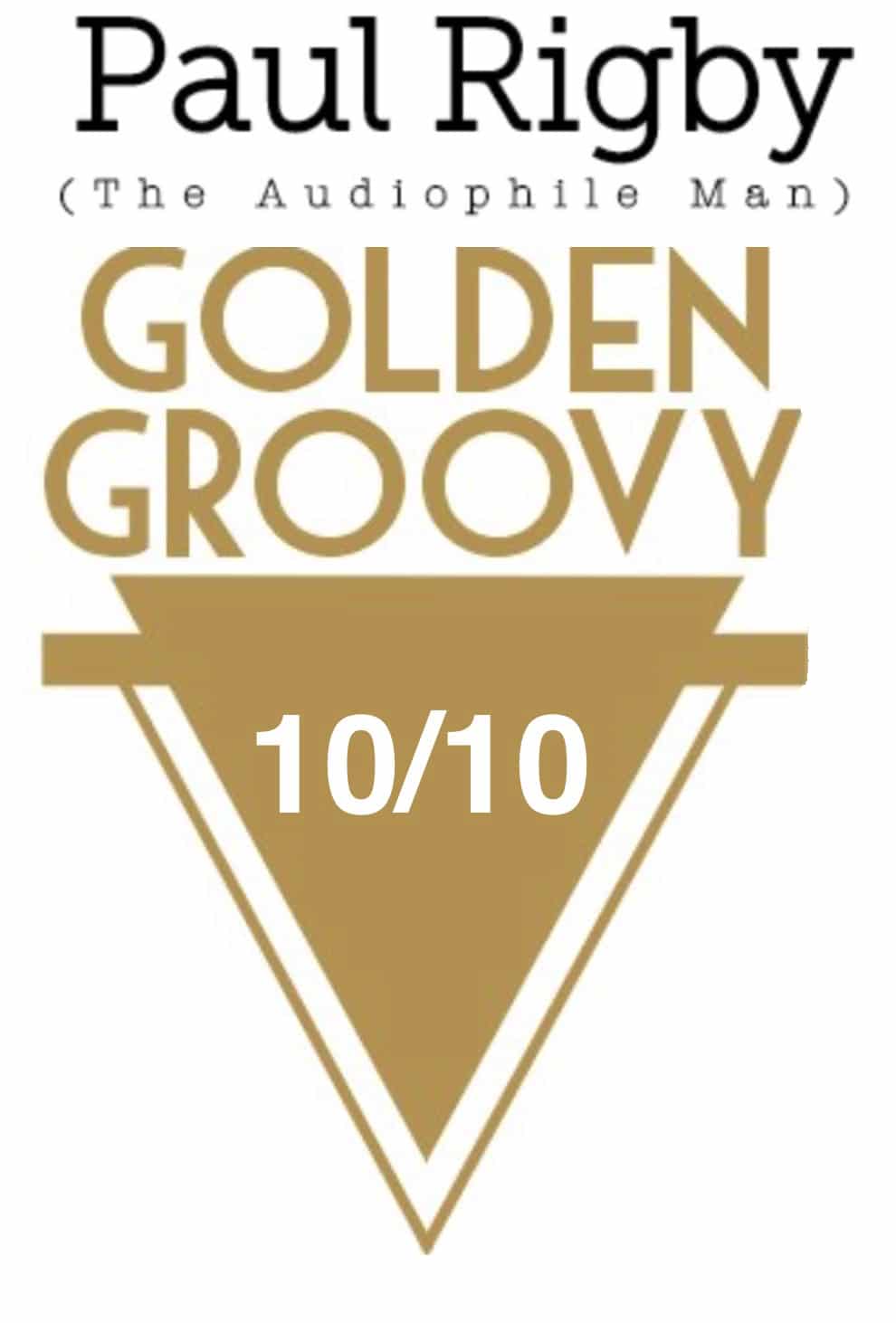

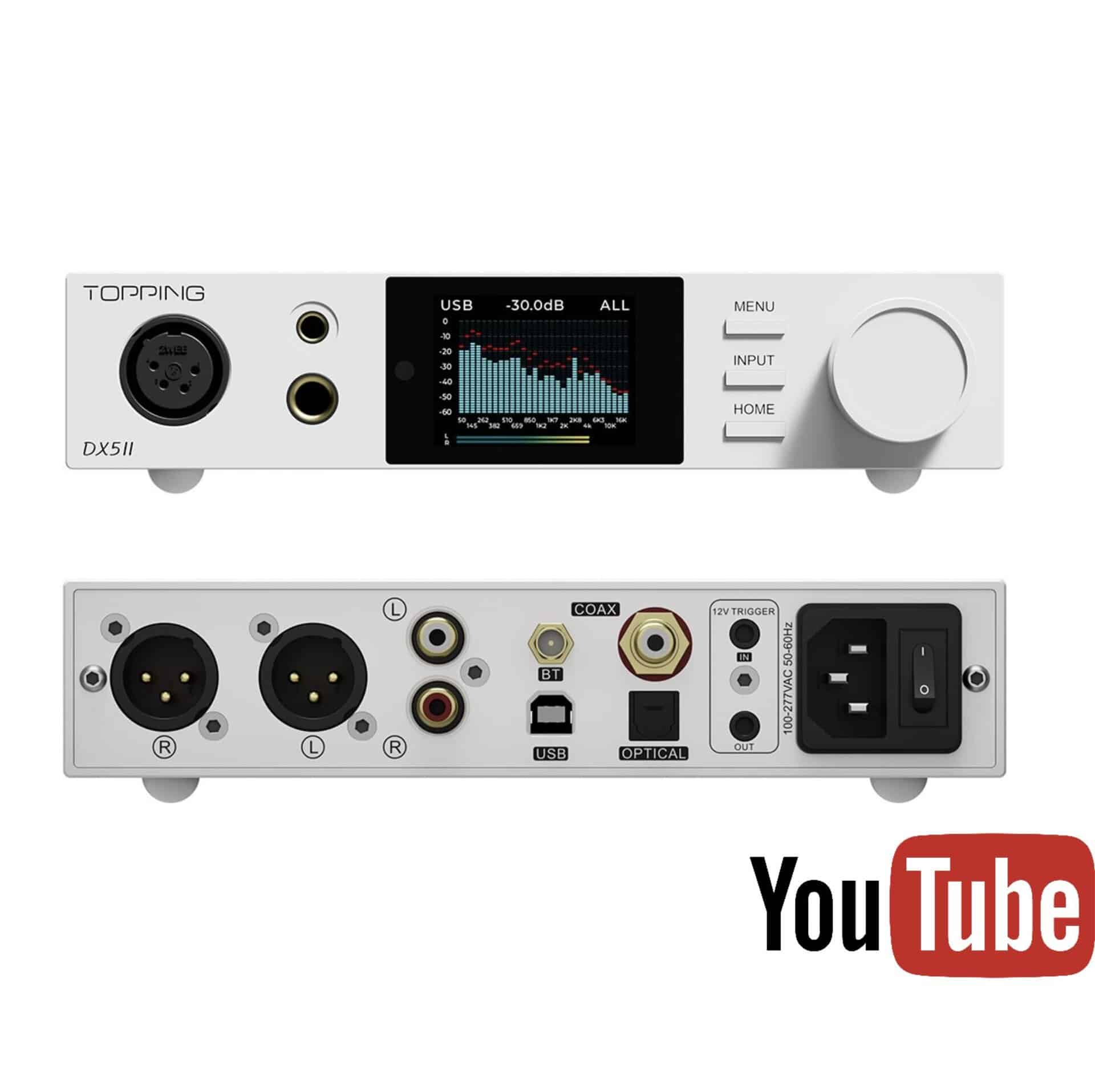
Where does he get the 1543 chips from? Aren’t they discontinued long time ago?
I’m sure you can pick them up here and there. I remember seeing 10 for sale recently on eBay! 🙂
any plans to test Schiit Yggdrasil? I wonder if Schiit can compete with the old TDA1543 and how much better it is from Gungnir MB…
Hi Czupet – been talking to Schiit lately so hope to grab something from them soon. Not sure what though!
If you pick Yggdrasil, pls request Gungnir MB along, for direct comparison. Thanks!
I’ll do my best!
It’s amazing story with tda1543 – it’s a 30 yrs old chip! I still have an ancient cd player from Philips based on 1543. It was made in 1988!
Hi Paul: An impressive, passionate review.
I absolutely love hearing these very hard-earned stories -namely Mr. Berry’s initial investigation, realization and finally tackling (conquering) new ground while defining new insights.
The finest minds (products/ equations/ theories) ultimately start this way. For if we were to take “known” (more like suspected ) facts as something carved in stone -we’d never move beyond some very basic technologies, and understandings.
That CAD designer Scott Berry has accomplished this is truly an inspiring moment/product. That it comes (more or less) from a one-man ‘show’ is even more impressive. Where are the multi-million (billion) dollar know-it-all’s in providing some rather profound insights ? Too busy celebrating past glories that no doubt produce healthy year-after-year dividends. (Makes sense come to think of it. Lol)
Congratulations to Mr. Berry and the CAD design team. Indeed, many a very passionate audiophile (and reviewer’s) have similarly praised its accomplishments.
Personally, a single USB input hinders functionality -and sales- considerably. As may the hard-wired AC power cord. I can easily see why Scott (Berry) has decided upon this; the seemingly inconsequential choice of detachable AC power cord has likely demonstrated a dramatic differences in sound quality-for the worse (when chosen indiscriminately) .And so, a dedicated, hared-wired design selected (after considerable listening sessions no doubt ).
I’m certain many potential users (i.e. buyer’s) would much rather benefit from a “upgradeable” Input Module -and IEC Power Cord.as well.
As its stands, Mr. Berry’s (by so many accounts) exceptional DAC will find very limited acceptance for no other reason than its frighteningly limited Input(s). That’s a shame.
Here’s hoping Mr. Berry will see the light (and opportunity) to tackle the reasons likely responsible for the decision NOT to incorporate these crucial features.
Once the “Naim” mentality is dispensed with (that company’s early use of XLR connectors -and proprietary (goofy), odd connectors), the passionate audiophile will likely be very grateful for Mr. Berry’s much needed (future?) modular ‘options’.
If eventually a reality, I can only foresee this from continuing investigations into ultimate performance that includes 95% of the existing market’s needs, SPDIF compatibility, for example -greater market share will result. .Additionally, having the CAD’s hard-wired AC power cord -a few feet (if not inches) too short than required is another missed opportunity (faux pas) that (rightfully) frustrates the audiophile connoisseur. And for no good reason. Other ‘options’ must be made available.
Should the company overcome its ‘Apple-esque’ like quirks, a serious threat to the current premium DAC market shall take root. And I for one, couldn’t be happier that the ‘underdog’ (the immensely talented ‘worker bee’) shall take his rightful place at the top of the pyramid. . .
A fine, insightful review Mr. Rigby -of a splendid hi-fi component. It was a pleasure to read.
peter jasz
.
Thanks for your kinds words Peter and your thoughtful comments.